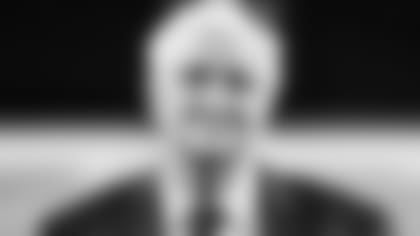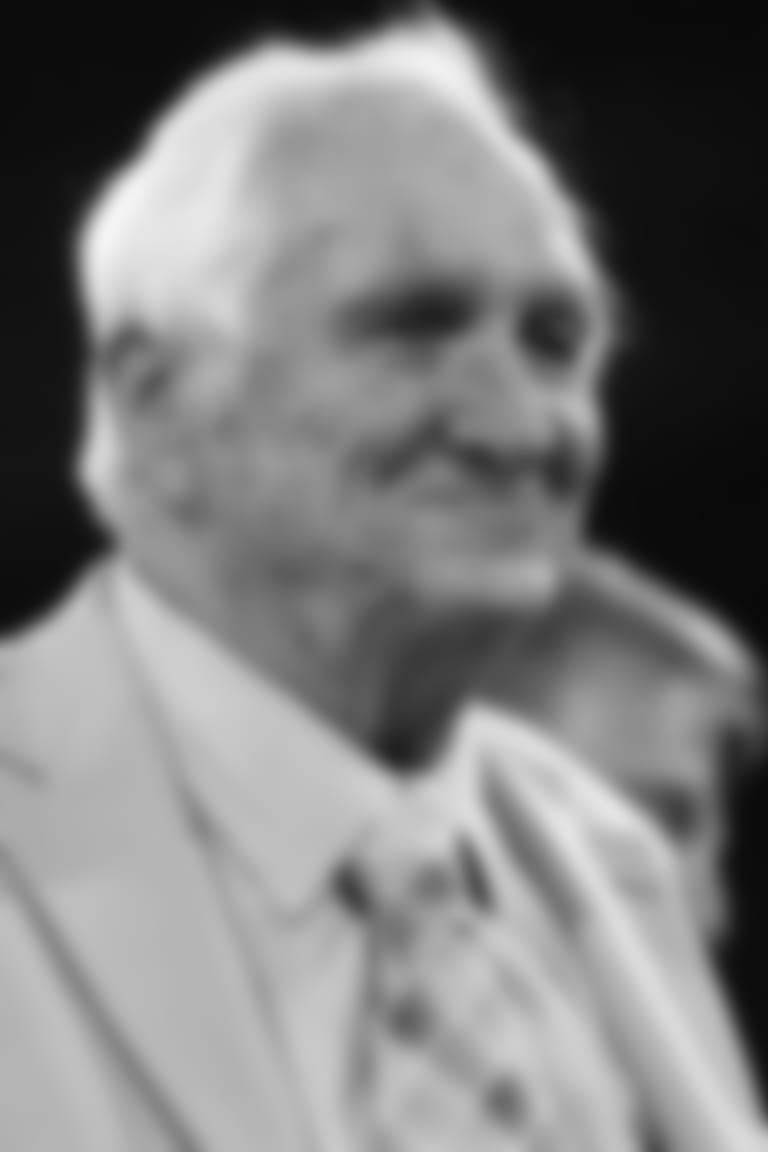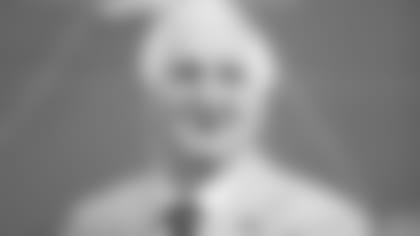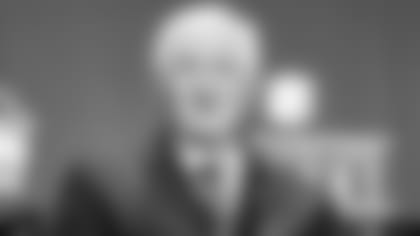At the time, scouting wasn't in its primitive stage as much as the Adam and Eve days. Only two NFL teams even employed scouts in the 1950s, the Rams and the San Francisco 49ers. Most teams would show up at the draft with a Street and Smith's college football preview magazine, which was written before the season even started.
As for how Brandt found himself on the ground level of what now is a multi-billion dollar business, he met Elroy "Crazy Legs" Hirsch, another Pro Football Hall of Famer, while the former was at the University of Wisconsin. Hirsch was then playing with the Rams, and put Brandt, whose playing days ended as a cornerback in high school, in touch with team executives Pete Rozelle, the future NFL commissioner, and Schramm.
"The Rams were the forerunner of all these scouting things that we do now, and after Elroy recommended me, they hired me on a part-time basis and that became a full-time job," Brandt said. "We would buy a car in Syracuse or some Eastern point and start driving, drive north to south seeing as many college players as you could and making connections. So much of it was also phone calls. Call a coach you know and ask for a recommendation. The reason for that was none of the teams had any money. Long distance was cheaper than hotels and gas."
When Clint Murchison Jr. landed an NFL expansion franchise in Dallas, his first phone call was to Schramm, who was by then a CBS television executive in charge of producing the 1960 Winter Olympics. Upon returning from Squaw Valley at its conclusion, Schramm called his former scout, then 26 years young, about a more prominent position. A few weeks later, Brandt was finalizing his first contract. And even though that was six decades ago, of course, the details are as fresh as an egg in the chicken coop.
"Bob Blackman was the head coach at Dartmouth, he lived at 19 Lime Road, and we were at his house. I signed Jake Crouthamel to a contract for $7,500," Brandt said. "I went back to where I was staying, the White Bear Inn, maybe it was the Big Bear Inn, and I found a pay phone to call Tex. Had to drop three dollars and 75 cents into that phone for long distance. Tex said, 'Gosh, I can't trust you, we'll be out of business.' We had agreed to not pay any of our players more than $5,500."
The Cowboys were the very definition of inauspicious start, not even winning a game that first season. Although the league didn't do them any favors. The franchise was granted so late in the process that they missed the collegiate draft altogether, and the expansion draft offered players past their prime and those who never enjoyed a prime. Luckily, Murchison believed in his trio of Schramm, Brandt and head coach Tom Landry.
Brandt has many fond memories of that inaugural campaign, none more so than from training camp, which saw a revolving door of players coming and going on a daily basis. Schramm left his young personnel director in charge of where the team would train that July and August in the midst of playing six preseason games. The first stop was Oregon, on the campus of Pacific University in Forest Grove. Well, that's not entirely accurate.
"There's probably six nonstop Dallas to Portland flights today, but the best and most direct for us back then was Dallas to Lubbock to Denver to Salt Lake City to Boise and finally at 6 p.m. – we had left early in the morning – we arrived in Portland," Brandt said.
After a few weeks in the paradise of the Pacific Coast, the team relocated to St. John's Military Academy in Delafield, Wisconsin, following a preseason game in Louisville. The conditions were ever-so slightly different, flickering 40-watt light bulbs, a plethora of bats roaming the hallways and dorm rooms. Within hours, the players were calling it "The Dungeon." The morning after the team's arrival, Brandt was walking to breakfast when he saw something up ahead.
"I'm probably the only person, or only personnel director I should say, that was ever hung in effigy," Brandt said with a laugh. "So Monday morning, I start walking over for breakfast and here's this big stuffed dummy hanging from one of these military statues with my name on it. They did it again a few days later, too."
That first season, Brandt was not only the de facto general manager, but he also served as a one-man scouting department. For comparison, the Cowboys currently have two dozen full-time scouts and a bevy of part-timers stationed all around the country. Even more staggering, Brandt didn't have an overstuffed three-ring binder or a notebook of any kind on college and pro players. Just his rolodex of seemingly unlimited phone numbers and his dolphin-like mind.
"It was all in my head," Brandt said. "We were signing players that first year before we even had a name. We were just the Dallas football team. We kept changing nicknames before settling on the Cowboys.
"It was just such a different time; there were no agents. The only person you ever might have to talk to beside the player was his wife. The worst thing in the world was that the wives would lie to each other about how much their husband was making. I wish we had just put the salaries on the locker room door and let everyone know, instead of Wife One telling Wife Two."
Those first few years were tough on multiple fronts. The Cowboys went 18-46-4 over their first five seasons, and attendance was abysmal, in part because the team wasn't good, but also the Dallas Texans of the AFL were also playing at the Cotton Bowl and splitting the fan base.
Still, Murchison couldn't have been more supportive of his leaders, and while the Texans were running every promotion imaginable to draw fans, Schramm told Brandt from the onset that the Cowboys would spend what money they had on scouting instead of advertising. Put a winning product of the field was the mindset.
The Texans relocated to Kansas City following the 1962 campaign, which coincided with the Cowboys expanding their national scouting network, as well as beginning to utilize the IBM computer which they input all of their evaluations. This was literally decades ahead of the curve.
By the time the team started winning in 1966, earning its first of 19 playoff berths in 20 years, Brandt was revolutionizing the scouting industry, having prospects run the 40-yard dash and take psychology tests, more or less inventing what is now the NFL Scouting Combine. He was drafting athletes who weren't primarily football players, like Bob Hayes, Cornell Green, Percy Howard, even Hall of Fame basketball coach Pat Riley, and bringing every undrafted free agent imaginable into camp, leading to such finds as Drew Pearson, Cliff Harris and Everson Walls.
Brandt also drafted eight Pro Football Hall of Fame players, starting with his first ever selection, Bob Lilly, in 1961. The argument can easily be made that no one has been responsible for bringing more talent into the National Football League.








